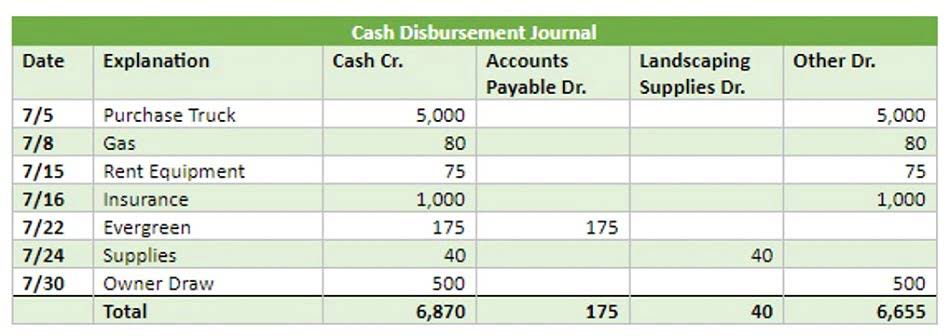How to hire an independent contractor: Vetting, payment, and required forms
You’ll notice in the screen shot above that Brenda Cooper had an Opening balance of $2,450 when you created her record. That’s money you already owed her, and for which she had probably sent you an invoice. QuickBooks Online turned that into an Accounts Payable item that you could find in multiple reports and on both the Vendors and Expenses screens. It will be listed as a Bill in reports, though you haven’t actually created one yet. Squire provides complete and personalized accounting solutions to meet your individual needs. Let’s dive in to see if QuickBooks Online can streamline your construction accounting processes.
Starting your entrepreneurship journey and learning how to run a business requires passion, strategy, and boldness. Stability, investing in yourself, and running your business takes a combination of apps, knowledge, and grit.
They may also ask that whoever you are paying is a 1099 worker. This means you can usually use QuickBooks Desktop or Online Payroll to pay a 1099 employee. You can pay contractors with direct deposit in QuickBooks Online. You can also make payments without QuickBooks Online or through QuickBooks Desktop Payroll.
Some who had lost full-time employment even turned one or more of these part-time passions into a small business and became independent contractors for other companies. Once new contractors have accepted your offer, you’ll need to have then fill out an IRS Form W-9. Employees complete the more detailed Form W-4 so that the employer can withhold income taxes correctly, but you won’t have to withhold taxes for your contract workers. They will be responsible for calculating and paying quarterly estimated taxes and filing an IRS Form 1040 every year. QuickBooks Online is ideal for independent contractors, offering tools for invoicing, payroll, and expense management to keep finances organized.
QuickBooks Payment Links: A Smarter Way to Get Paid
Let’s look at how to hire an independent contractor, including how to choose one, pay one, and what paperwork you’ll need. Any non-employee who you might pay $600 or more in a given year (although electronic QuickBooks Payments, such as with a credit card, don’t count). Before you start, check the IRS guidelines so you know who you need to file 1099s for. Though you don’t have the same payroll requirements for contractors as you do employees, it’s very important to get it right.
IRS Form 1099-MISC is a summary of all income an independent contractor has received that isn’t generated as a regular employee. Independent contractors need to have this form to accurately report their income to the IRS on their taxes. You will be required to issue a 1099 form to all contractors you paid $600 or more throughout the tax year.
With QuickBooks Online Payroll you can pay and e-file 1099s and W-2s for contractors and employees. The most popular use of 1099s is reporting independent contractor payments for services provided to a business. QuickBooks Contractor Payments can help simplify the process of collecting W-9s from your independent contractors. Using our secure online portal, contractors can complete their own W-9s, saving you time and helping ensure the information you collect from your team is accurate.
Contractor Payments + Simple Start
Hiring an independent contractor can help you save on payroll costs or bring some much-needed expertise to a one-off, unique project you’re working on. These projects must be outside of the usual operations of your business. Tax season is coming up fast and now is the time to begin preparing 1099 forms for your independent contractors.
In this article, we’ll discuss how to make QuickBooks contractor payments. You’ll also learn how to use other QuickBooks payment and tax filing services. QuickBooks Online remains one of the best tools for managing contractor payments and staying compliant with tax reporting requirements. Why 1099 Compliance Matters NowIn recent years, the IRS has been increasing scrutiny of businesses that hire contractors. An expert can guide you through QBO setup and answer questions based on the information you provide; some bookkeeping services may not be included and determined by the expert. For more information about Expert Assisted, refer to the QuickBooks Terms of Service.
QuickBooks Self-Employed is best suited for freelancers, solopreneurs and consultants who want an easy-to-use online accounting tool to keep track of their business’s finances. QuickBooks offers many different options for software, so it’s important to make sure you’re choosing the one most suitable for your business. QuickBooks Self-Employed does not offer double-entry accounting, which is more accurate and can help prevent accounting errors.
Year-round visibility into your business, with maximum tax deductions
The foundation of financial health for every business owner is separating the finances of the business from their personal finances. Find help articles, video tutorials, and connect with other businesses in our online community. Relevant resources to help start, run, and grow your business. You only need to collect backup withholding if you did not receive a valid TIN from your contractor.
How to avoid employee misclassification
- Step-by-step guide with filing costs, tax info, licensing, and FAQs.
- The payment structure you and your contractor agree upon will largely depend on the type of work that needs to be done and the expected project duration.
- This information is what will be used to fill out their 1099-NEC, the record of payment they use to file their tax returns.
- By doing this, you eliminate any potential confusion later on.
You do not need to send a 1099-NEC to a corporation or to an LLC that is treated as a C Corp or an S Corp. When paired with Method, contractors gain even deeper insights into project profitability, helping make smarter pricing and resource allocation decisions. Integrating QuickBooks Online with a CRM like Method enhances its capabilities. Method streamlines project profitability tracking, automates workflows, and minimizes errors—all while syncing seamlessly with QuickBooks. Stay compliant and optimize your business operations with a Delaware registered agent. To get paid faster, here are 20 tips designed to get clients to pay their bills by the due date or earlier.
QuickBooks Online offers many ways to do the same tasks when you’re working with independent contractors. When you click one of these, QuickBooks Online opens a form with many of the contractors’ details already filled in. Either way, you’ll be able to enter the quantity and rate and/or amount and mark it billable (with a markup percentage, if you’d like) to a customer or project. You can choose an option from this vendor action menu to pay your independent contractors.
But you’ll need add-on capabilities if you want to pay by direct deposit or have QuickBooks e-file 1099-NECs for you, for example, that require additional monthly fees. quickbooks for independent contractors QuickBooks Online offers an easy way to stay compliant, making it easy to track payments and generate necessary tax forms. By setting up contractor records properly from day one, your business can avoid IRS scrutiny while maintaining a smooth, long-term working relationship with your contractors.
- The Self-Employed plan lets you keep your business and personal expenses separate.
- You will be required to issue a 1099 form to all contractors you paid $600 or more throughout the tax year.
- It is intended for one-person businesses looking to organize and grow their business.
- This plan is ideal for those who want to integrate their tax filing with their accounting software.
What is the difference between an independent contractor and a self-employed worker?
Terms, conditions, pricing, special features, and service and support options subject to change without notice. For example, a business owner who works for other businesses is an independent contractor. Otherwise, you have to determine if they are classified as an employee, a statutory employee, or a government worker. If you’re unsure of a worker’s employee status, fill out IRS Form SS-8 to check.
Whether they chose to, or circumstances forced them to, these new entrepreneurs had to learn new ways to get paid and to prepare their income taxes. This ensures timely payments and gives your business a polished, professional image. With these tools, you avoid chasing down payments and ensure steady cash flow for your business. QuickBooks Online integrates seamlessly with popular construction management tools, making it ideal for both small and mid-sized construction companies.







